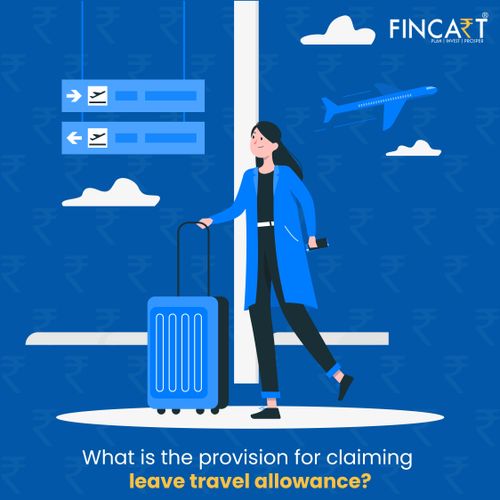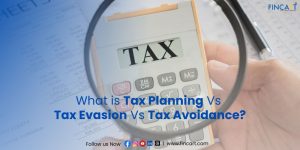Table of Contents
ToggleWe all like traveling these days, don’t we? Every year we all plan to make at least one trip. But little do we know that we could claim one of the allowances if provided by your employer. It could also help you to save taxes too! But how do you claim it? Can you claim it every year? How much amount does it cover? What is included in this? Is there an eligibility criterion to claim this allowance?
Tax deductions and exemptions provided by the Income Tax department have allowed us to save the most amount of tax possible. By using these exemptions, employers can structure employee Cost to Company (CTC) in a tax-efficient manner. Leave Travel Allowance (LTA) is an exemption available to salaried workers under the law that is also widely used by employers.
When planning travel to claim an LTA exemption, many factors need to be considered. LTA exemptions are governed by income tax provisions:
What is Leave Travel Allowance (LTA)?
Leave Travel Allowance (LTA) is an allowance provided by employers to employees who are on leave from work to cover their travel expenses. By the Income Tax Act, of 1; 961, LTAs are an important component of an employee’s salary, as they are eligible for income tax exemptions, making them a valuable tool for tax saving. LTA received by the employee during the year will not be included in his net income under Section 10(5) of the Income Tax Act.
Example of LTA
Assume that LTA granted by your employer is Rs 30,000, and the actual travel cost is Rs 20,000, then only Rs 20,000 will be available as an exemption and the balance of Rs 10,000 would be included in taxable salary.
Take another example, suppose the Leave Travel Allowance provided by the employer is Rs 25,000. The actual expenses spent on travel are Rs 30,000. Here, the LTA exemption allowed would be Rs 25,000 irrespective of a higher amount spent on travel.
Benefits of Leave Travel Allowance
1. Tax Exemption: LTA provides tax benefits as the amount spent on eligible travel expenses is exempt from income tax.
2. Family Inclusion: The allowance covers immediate family members, promoting family travel and bonding.
3. Domestic Exploration: Encourages employees to explore different parts of India, contributing to tourism and cultural exchange.
4. Reimbursement: Allows reimbursement of actual travel expenses or up to specified limits, easing financial burden on employees.
5. Employee Well-being: Promotes work-life balance by facilitating quality time with family during approved leave periods.
Conditions to claim Leave Travel Allowance exemption
The following conditions must be satisfied to claim an LTA exemption:
- You can claim LTA for travel costs incurred for yourself and your family.
- LTA can be claimed for any two years in a block of 4 years. The current block year for claiming LTA is 2022 to 2025.
- The actual journey is a must to claim the exemption.
- The exemption is available only on the actual travel costs i.e., the air, rail or bus fare incurred by the employee. Local conveyance, sightseeing, hotel accommodation, food, etc., are not eligible.
- The exemption is also limited to LTA provided by the employer.
- It applies to travel only within the country.
What is the eligibility for LTA exemption?
The LTA (Leave Travel Allowance) exemption for tax purposes is based on the actual travel cost. It covers expenses for a journey from the employee’s origin to the destination and back, using the shortest route by air, rail, or bus. Only the cost of travel tickets is eligible for exemption. Other expenses like conveyance, sightseeing, accommodation, shopping, and food are not allowed. If the employer’s LTA allowance is less than the actual travel cost, the exemption is limited to the employer’s provided amount.
Documents required for claiming LTA
To claim LTA, fill out the LTA application form supplied by your employer, including essential details like travel date, destination, mode of transport, and incurred costs. Alongside the application, submit supporting documents such as tickets, boarding passes, and invoices as evidence for your LTA claim. These documents are crucial to validate your travel expenses and support your application.
LTA Exemption Rules for Various Modes of Transport
The LTA claim depends on the mode of transport.
- If travel is by air, the LTA limit is Actual Expenses or Economy class air fare of the national carrier by the shortest route to the place of destination, whichever is lower.
- If travel is by rail, the LTA limit is Actual Expenses or first-class AC rail fare by the shortest route to the place of destination, whichever is lower.
- If travel is by a recognized public transport system, the LTA limit is Actual Expenses or 1st class/ deluxe class fare by the shortest route to the place of destination, whichever is lower.
- If no recognized public transport system is available, the LTA limit is Actual Expenses or first-class rail fare by the shortest route to the place of destination, whichever is lower. (It is assumed as if the journey had been performed by rail.)
Looking for a Financial Advisor?
Connect with Fincart for personalized financial advisory services and achieve your financial goals with confidence.
How Much Leave Travel Allowance Exemption Will You Get?
There is a limit on how much LTA an employer may provide as an exemption. For instance, if Rs. 30,000 of LTA is granted by your employer and the actual travel cost incurred is Rs. 20,000 by an employee then the exemption will only be available till Rs. 20,000. Therefore the balance of Rs. 10,000 will be included in the taxable salary income.
Procedure to Claim LTA
LTA claims are generally handled by employers. Employers announce the deadline for employees to claim LTA and may require employees to submit proof of travel along with the mandatory declaration, such as tickets, boarding passes, invoices from travel agents, etc. Although employers don’t need to collect proof of travel, it is always advisable for employees to keep copies for their records as well as to submit them to their employer on demand based on the LTA policy of the company.
What Happens to LTA If There is No Traveling Involved?
Because the LTA in salary is part of your overall salary structure, it is automatically credited to your account regularly. If you do not travel or do not have a valid proof of travel, you cannot claim the LTA received for tax exemption purposes. Your net taxable income will be increased if you receive an LTA.
What expenses can be included under LTA?
Under the Income Tax Act, LTA (Leave Travel Allowance) can include the following expenses:
Travel Expenses: LTA encompasses the travel costs for the employee and their immediate family members (spouse, children, and dependent parents or siblings). The travel can be by air, rail, or public transportation, following the employer’s or Income Tax Department’s specified rules.
Destination: LTA is applicable for travel within India. Employees can claim expenses incurred on travel to any location in India during their leave period.
Mode of Travel: LTA covers expenses for travel by air, train, or other public transportation. Reimbursement is based on the actual amount spent or as per limits set by the employer or tax authorities.
Leave Period: LTA can be claimed for travel during the employee’s leave period, including annual leave, casual leave, or any other approved form of leave.
Unclaimed LTA
Unclaimed LTA is allowed to be carried forward. If an employee has not availed LTA exemption once or twice in a block of 4 years, he is allowed to carryover one exemption to the next block provided he avails this benefit, in the first calendar year of immediately succeeding block.
For example, during the 4-year block of 2014-2017, if you did not claim LTA or claimed it only once, then you will be allowed to carry forward one LTA to 2018 (first year of next block, i.e. 2018-21). Thus, from 2018 to 2021, you will be able to claim LTA three times.
Can Unclaimed LTA be Carried Over to the Next Block Year?
Under the carry-over concession rules, under which the employee can claim LTA tax breaks on three journeys made in the current block of years if he hasn’t claimed LTA in the last running block or has just claimed it once, the employee can still claim one additional LTA in the next block of calendar years. To utilize the carryover concession facility, one LTA exemption for the journey must be claimed during the first calendar year of the next block.
For instance, in the last block of the year, between 2018-2021, you made only one LTA tax exemption claim as an employee. Therefore, you become eligible for LTA claims for up to 3 journeys in the current block, between 2022 and 2025. However, your first claim must be filed in the first calendar year of the current block, i.e. in 2022.
FAQ
Leave travel allowance is an amount provided by the employer to the employee for Travelling while on Leave. This is a part of your salary which is exempted from tax.
Employees in India are generally eligible for LTA. To claim LTA, employees must undertake travel during their leave period, and the exemption is subject to specified conditions and limits set by the income tax regulations.
Under LTA, expenses related to travel within India are covered. This includes the cost of transportation by air, rail, or bus for the employee and eligible family members.
LTA can be claimed for two journeys in a block of four years and not on every financial year.
The concept of “block years” in the context of LTA (Leave Travel Allowance) refers to a four-year block set by the income tax authorities. This block consists of four consecutive calendar years, during which an employee is allowed to claim LTA for up to two trips.
No, LTA (Leave Travel Allowance) is specifically applicable for domestic travel within India.
For LTA exemption, the costs incurred for family members traveling with the employee are allowed. Family members include spouses, children, dependent parents, and dependent siblings.
The exemption can be claimed for up to two children if born on or after 1st October 1998.
LTA exemption is calculated as the least of the actual travel expenses incurred on a trip within India or the fare of the equivalent journey by the shortest route in the chosen mode of transportation (air, rail, or bus). Again, it is limited to the LTA component in your compensation package or CTC.
If an employee doesn’t travel at all or lacks valid proof of travel, they cannot claim LTA for tax exemption purposes. In such a scenario, the received LTA amount is treated as a part of the employee’s taxable income.
If an employee does not fully utilize their LTA entitlement in a particular block of four years, it can be carried over to the next block. But the employee is usually required to utilize this carryover LTA in the first calendar year of the immediately succeeding block.
If the unutilized LTA is not claimed within the first year of the next block, it will expire and would not be allowed to be claimed later on.
Yes, there is a specific deadline for employees to claim LTA. Usually, LTA can be claimed for exemption twice under the block of 4 years.
No, LTA (Leave Travel Allowance) is specifically designed for personal travel during leave periods and cannot be claimed for business trips or official travel.
LTA can be claimed only twice in a block of four calendar years. It is not claimable every year.
The LTA exemption is limited to the actual fare incurred for travel within India for the shortest route, up to the fare of an economy-class airfare or first-class rail fare, depending on the mode of travel.




